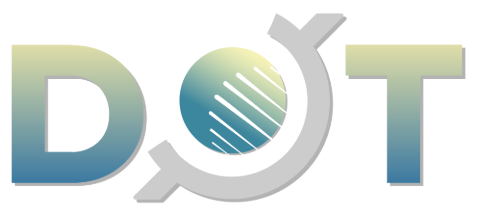Editor's note: The 43-day federal government "shutdown" in the United States has finally come to an end. Trump claims that this record-breaking shutdown resulted in a loss of $1.5 trillion. How should we assess the impact of this event on the U.S.? How long will it take for the U.S. to recover?
【Anchor】Hello, everyone. Welcome to DDN Business Insider. I am Yunfei Zhang. The 43-day federal government "shutdown" in the United States has finally come to an end. Trump claims that this record-breaking shutdown resulted in a loss of $1.5 trillion. How should we assess the impact of this event on the U.S.? How long will it take for the U.S. to recover? To discuss these issues, we have invited researcher Zhou Mi from the Chinese Academy of International Trade and Economic Cooperation and renowned economist Song Qinghui for analysis.
First, I would like to ask Mr. Zhou. This record government shutdown has caused a wide range of impacts on the U.S. economy and society, affecting everything from social welfare to market confidence. How do you comprehensively assess these effects?
【Zhou】The impact of the U.S. government shutdown this time is indeed very significant. First, the timing coincides with the year-end consumption season, which is generally a busy period for economic activities and consumer spending. Thus, this shutdown has adversely affected the development of the consumption economy, particularly for many foreign tourists visiting the U.S. We have seen disruptions in aviation management, delays in public information provision, and the inability of food assistance programs to operate normally. These consequences will affect market confidence in the U.S. I believe that even after the government resumes normal operations, it will require some time to adjust and adapt. Therefore, the impact and shock on the U.S. economy toward the end of the year are considerable. Another aspect to consider is that during the shutdown, the Trump administration did not completely reduce intervention; rather, it used this opportunity to conduct large-scale layoffs, which has greatly impacted the recovery of normal government activities afterward. Hence, whether recovery can happen in the short term is something we should observe. Even when the government resumes normal operations, it may not be able to return to its previous scale and state in the short term, which will have a significant impact on global investors' confidence in the U.S.
【Anchor】Alright, I would like to ask Mr. Song the same question. Some well-known institutions believe that this shutdown has triggered "snowballing" economic losses. How do you assess the impact of this shutdown?
【Song】The impact of the U.S. government's record-breaking shutdown is very evident in the short term. On one hand, key economic data, such as non-farm payroll and CPI, were delayed in their release, leading to a lack of benchmarks for the market and the Federal Reserve to assess the economic situation. This has increased the difficulty and uncertainty in monetary policy decisions. On the other hand, the international standing of the U.S. has been undermined, with concerns in the international community about the stability of the U.S. government and its fiscal management capabilities. Meanwhile, although this shutdown will not trigger a systemic recession, it has exposed the structural failures in U.S. fiscal governance. Currently, the U.S. Treasury Secretary has warned of the risk of halving the Q4 GDP growth rate. However, negative impacts are still expected to surface because this shutdown far exceeds any previous shutdowns in terms of its impact on economic activity, which is cumulative and linear. Factors such as interruptions in government services, harmed consumer confidence, and delayed business investments could negatively affect the Q4 GDP growth rate by about 0.1 to 0.3%.
【Anchor】Yes, after the U.S. government reopens, the delayed key economic indicators such as CPI and non-farm employment data may be released successively. How will this concentration of "late data" affect the market and the direction of U.S. economic policy going forward? For instance, will expectations for a rate cut in December be affected?
【Song】After the U.S. government reopens, the market will first focus on the delayed non-farm employment report, consumer price index, and producer price index (PPI), which are core data. Once this data is released, it may significantly amplify short-term market volatility. If the data shows a clear impact of the shutdown on the economy, such as weak employment and declining consumption, expectations for a rate cut in December are likely to heat up significantly. However, if the data indicates a short-term setback but shows signs of a quick recovery, the Federal Reserve may choose to remain cautious or delay interest rate cuts until Q1 of 2026.
【Anchor】Alright, Mr. Zhou, what are your thoughts on this?
【Zhou】Economic data is undoubtedly of great concern to everyone. This economic data can present two scenarios. One scenario is that before the shutdown, the U.S. government had already collected the relevant data, and after this period, it will begin to publish it. This will prompt the market to adjust its current economic expectations. Of course, the market was generally not overly optimistic about this set of economic data. Therefore, we have seen that the relevant macroeconomic policies in the U.S., such as the Federal Reserve adjusting its interest rates, were made without the foundation of relevant policy information. Once this information is released, I believe it will correct people's prior observations to some extent.
The other set of data is also worth our attention. After the government shutdown, we noticed that the mechanisms and necessary channels for collecting relevant data and information, which were originally in place, have been paused. The impact of this pause on the outcomes is also very direct. So, while we have not yet seen this data, I expect that overall, there will not be any particularly favorable data indicating economic growth. Moreover, we see that the Trump administration is actively responding to these uncertainties, including enhancing communication with key trading partners and reducing market intervention in certain situations. I believe these efforts aim to ensure that the economy does not suffer a sharp slowdown.
【Anchor】Yes. Another point to note is that the recently passed Continuing Appropriations and Temporary Funding Act only extends funding for most federal agencies until January 30, 2026, serving as a transitional solution, and nine annual budgets have yet to be finalized. Mr. Zhou, does this mean that the U.S. government still faces the potential risk of another "shutdown" in two months? The core disagreements between the two parties have not been fundamentally resolved. Do you think short-term negotiations can reach a lasting consensus?
【Zhou】The risk of a government shutdown in the U.S. is always present because, overall, such shutdowns mainly stem from differing views between the two parties. This time, the primary issue was regarding the funding of the healthcare bill that is set to expire at the end of this year. I believe that this issue was not effectively resolved in the temporary appropriations bill, meaning that while there may be a temporary halt to the shutdown, the fundamental causes of government shutdowns remain unchanged. This is an important factor. On the other hand, we should also recognize that there are many different viewpoints between the two parties in the U.S., especially regarding the balance of fiscal revenue and expenditure. Whether the government has made significant efforts or effectively improved this imbalance matters. If this situation does not change, I think that after the January deadline, the U.S. government may still face a significant risk of another shutdown because the scale of the funding is limited, making it difficult to ensure normal operations for a reasonably extended period.
【Anchor】Alright, Mr. Song, what do you think?
【Song】The recently passed Continuing Appropriations and Temporary Funding Act is merely a short-term stopgap, extending government funding until January 30 of next year. It is essentially a band-aid rather than a cure. The reason is simple: the two parties have significant disagreements on core issues such as border wall funding, defense spending, and healthcare. Additionally, the struggle between conservatives and moderates within Congress continues. Meanwhile, early next year marks the start of the presidential election year, which will escalate the budgetary negotiations, heightening political risks. In summary, there remains a high probability that the U.S. government could shut down again at the end of January, especially given the connection between budget negotiations and election issues. Currently, the polarization in U.S. politics deepens, and the fiscal negotiations between the two parties have become increasingly adversarial, with shutdowns being used as political leverage. In the long run, this systemic deadlock will undoubtedly weaken the flexibility of U.S. fiscal policy. In my view, regardless of who is in power, fiscal easing and debt expansion will likely be challenging to reverse. The only possible direction for adjustment may involve raising corporate taxes and capital gains taxes while cutting some social welfare spending.
【Anchor】Given this situation, I would like to ask Mr. Song how investors should prepare in advance to hedge against risks and structure their assets?
【Song】Investors should view the risk of government shutdowns as a recurring political risk and factor it into their investment portfolios. On one hand, they can increase allocations in gold, high-quality U.S. Treasury bonds (especially those yielding high rates), and cash in U.S. dollars to hedge against political uncertainties. On the other hand, they may consider reducing reliance on a single market and increasing global asset allocations, particularly focusing on robust emerging markets and non-U.S. developed markets, to hedge against U.S. political risks.
【Anchor】Alright, Mr. Zhou, what are your thoughts on this?
【Zhou】I believe that investors are certainly looking to minimize their risks associated with the cyclical nature of U.S. government shutdowns. This risk comes from two aspects: First, there is the potential disruption of public services due to the shutdown. For example, key public services related to shipping may be affected, and investors will need to be more adequately prepared for these shortcomings. Second, the shutdown may hinder the progress of existing agendas, which could affect the credit ratings of certain U.S. financial assets, including the U.S. dollar. Therefore, a government shutdown does not mean that the U.S. market is completely chaotic. Investors should be mindful of these mechanisms to effectively consider how to diversify risks and stabilize their investment returns, thereby reducing the unnecessary macroeconomic policy impacts on investments. I think these are points worth paying attention to.
【Anchor】After the government shutdown ends, aside from the potential risk of another shutdown, what other core uncertainties do you think the U.S. capital markets still face?
【Song】After the shutdown ends, the U.S. capital markets continue to face several core uncertainties, with the most significant being policy uncertainty, as the Federal Reserve's policies and fiscal decisions may be influenced by political factors.
【Anchor】OK, thank you to all the guests. That's all for this episode. Remember to follow us on YouTube or download our APP. I'm Yunfei Zhang, thanks for watching, and see you next time.
Anchor: Laura Cheung | Edited: Kelly Yang, Laura Cheung, Rachel Liu | Translate: Kato Ip | Proofread: Chris Liu
Related News:
DDN Business Insider | International gold price fluctuations: How to assess risks?




















Comment